Refine search
Actions for selected content:
84 results
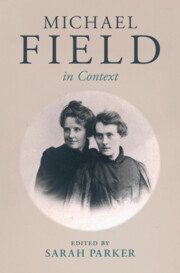
Michael Field in Context
-
- Published online:
- 03 October 2025
- Print publication:
- 25 September 2025
Preface
-
- Book:
- Michael Field in Context
- Published online:
- 03 October 2025
- Print publication:
- 25 September 2025, pp xv-xxi
-
- Chapter
- Export citation
Chapter 27 - Michael Field and Post-Victorian Decadence
- from Part V - Afterlives and Future Fields
-
-
- Book:
- Michael Field in Context
- Published online:
- 03 October 2025
- Print publication:
- 25 September 2025, pp 259-267
-
- Chapter
- Export citation
Chapter 24 - Michael Field among the Women Poets
- from Part IV - ‘Be contemporaneous’
-
-
- Book:
- Michael Field in Context
- Published online:
- 03 October 2025
- Print publication:
- 25 September 2025, pp 220-229
-
- Chapter
- Export citation
Chapter 20 - Michael Field, Walter Pater, and Queer Aestheticism
- from Part IV - ‘Be contemporaneous’
-
-
- Book:
- Michael Field in Context
- Published online:
- 03 October 2025
- Print publication:
- 25 September 2025, pp 183-191
-
- Chapter
- Export citation
Introduction
-
- Book:
- Maritime Relations
- Published online:
- 23 August 2025
- Print publication:
- 04 September 2025, pp 1-17
-
- Chapter
- Export citation
Introduction
-
- Book:
- Railway Infrastructure and the Victorian Novel
- Published online:
- 12 August 2025
- Print publication:
- 28 August 2025, pp 1-23
-
- Chapter
- Export citation
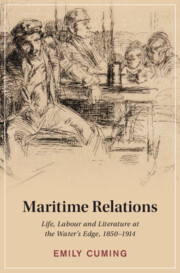
Maritime Relations
- Life, Labour and Literature at the Water's Edge, 1850–1914
-
- Published online:
- 23 August 2025
- Print publication:
- 04 September 2025
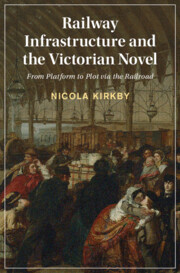
Railway Infrastructure and the Victorian Novel
- From Platform to Plot via the Railroad
-
- Published online:
- 12 August 2025
- Print publication:
- 28 August 2025
Conclusion
-
- Book:
- Selling Sexual Knowledge
- Published online:
- 24 June 2025
- Print publication:
- 10 July 2025, pp 244-249
-
- Chapter
-
- You have access
- Open access
- HTML
- Export citation
Introduction
-
- Book:
- Selling Sexual Knowledge
- Published online:
- 24 June 2025
- Print publication:
- 10 July 2025, pp 1-21
-
- Chapter
-
- You have access
- Open access
- HTML
- Export citation

Selling Sexual Knowledge
- Medical Publishing and Obscenity in Victorian Britain
-
- Published online:
- 24 June 2025
- Print publication:
- 10 July 2025
-
- Book
-
- You have access
- Open access
- Export citation

The Guitar in Victorian England
- A Social and Musical History
-
- Published online:
- 09 June 2025
- Print publication:
- 26 June 2025
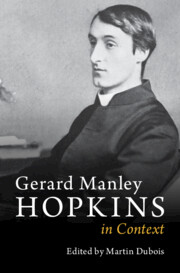
Gerard Manley Hopkins in Context
-
- Published online:
- 16 January 2025
- Print publication:
- 16 January 2025
Chapter 3 - Samuel Butler
- from Part I - 1850–1900
-
-
- Book:
- The British Novel of Ideas
- Published online:
- 05 December 2024
- Print publication:
- 12 December 2024, pp 64-79
-
- Chapter
- Export citation
Introduction
-
- Book:
- Liturgy, Ritual, and Secularization in Nineteenth-Century British Literature
- Published online:
- 14 November 2024
- Print publication:
- 21 November 2024, pp 1-21
-
- Chapter
- Export citation
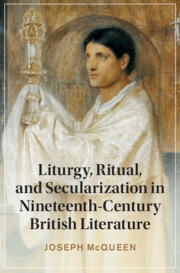
Liturgy, Ritual, and Secularization in Nineteenth-Century British Literature
-
- Published online:
- 14 November 2024
- Print publication:
- 21 November 2024
23 - Victorian Essays in Criticism
- from Part III - Assaying Culture, Education, Reform
-
-
- Book:
- The Cambridge History of the British Essay
- Published online:
- 31 October 2024
- Print publication:
- 04 July 2024, pp 340-355
-
- Chapter
- Export citation
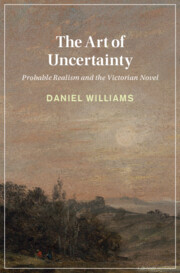
The Art of Uncertainty
- Probable Realism and the Victorian Novel
-
- Published online:
- 29 February 2024
- Print publication:
- 07 March 2024
Chapter 11 - Reading the Nonevental
-
-
- Book:
- Nineteenth-Century Literature in Transition: The 1860s
- Published online:
- 01 February 2024
- Print publication:
- 08 February 2024, pp 203-218
-
- Chapter
- Export citation
